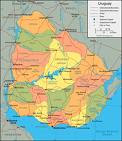:::::::::::::::::::::::::::::::::::::::::::::::::::::::::::::::::::::::::::::::::::::::::::::::::::::
THE SOUTH AMERICAN SAIJIKI
:::::::::::::::::::::::::::::::::::::::::::::::::::::::::::::::::::::::::::::::::::::::::::::::::::::
This saijiki is under construction.

Dear Haiku poets from the region,
please help with your positive support, info and contributions!
It is difficult to re-plant the Japanese kigo concept in areas that have different seasonal aspects and no kigo culture.
A standard or rather many standards for seasons in South America to be used for regional kigo colletions is still under construction. It depends on the regional haiku poets and what they choose to write their poetry about.
Please contribute your aspects of existing kigo or new kigo you suggest for your area to help deepen the worldwide understanding of haiku poets for regional diversity.
It is a difficult undertaking, taking into consideration the various climate zones of the continent. Therefore this saijiki will come in many regional parts.
Apart from trying to find regional kigo, we also suggest to collect and specify topics (keywords) for the areas where haiku poets have started writing Japanese-style short poetry.
Your input is most necessary and greatly appreciated!
Gabi Greve, Japan
World Kigo Database
:::::::::::::::::::::::::::::::::::::::::::::::::::::::::::::::::::::::::::::::::::::::::::::::::::
Adjustments for Northern and Southern Hemisphere
If there is not specifical mention, a calendar reference kigo in the World Kigo Database refers to the Northern Hemisphere as its place of origin.
For the Southern Hemisphere, add six months.
December and short night are kigo for summer in the Southern Hemisphere, for example.
For a calendar reference kigo originating in the Southern Hemisphere, add six months to get to its Northern counterpart.
These adjustments will not be mentioned specifically for each kigo in the database.
Calendar reference kigo
are for example the names of each month and then the many festivals of a specific date and the memorial days.
Japanese haiku poets up from the North of Hokkaido down to the South of Okinawa have no problem when using DECEMBER as a kigo, for example, since kigo are conventions for writing poetry.
Haiku poets from South America are especially invited to contribute their aspects of moods and poetic allusions for each month in their area. What is your december like? Please let us know!
Officially, we do not use the months to define a season within the WKD, but roughly according to the Northern Hemisphere, you can expect these seasons in addition to the wet and dry seasons in the Southern Hemisphere:
Spring -- September, October, November
Summer -- December, January, February
Autumn (Fall) -- March, April, May
Winter -- June, July, August
Near the aequator, we have mostly two seasons
wet seasons are from April to July and November to January
dry seasons are from August to November and February to March.
:::::::::::::::::::::::::::::::::::::::::::::::::::::::::::::::::
Here are some short notes about the climate in South America, we might add more details as we go along.
Argentina
Wide climate variations from sub-tropical in the north of the country to sub-antartic in the South. Buenos Aires can be oppressively hot and humid December to March.
Brazil
There is a tropical rainy season in the Amazon basin area from April to July. In the rest of the country the dry season runs from May to October
Bolivia
Rain all year in the east of the country. Heavy rainfall from May to November in the high western plateau.
Chile
Winter rain fall in the southern coastal areas. On the pacific coast very dry weather in the desert.
Colombia
Guyana
Guyana has a subtropical climate with two wet seasons and two dry seasons. The wet seasons are from April to July and November to January while the dry seasons are from August to November and February to March.
Along the coastlands, each wet and dry period lasts about three months. (source : Kenneth Daniels, WKD Facebook)
Ecuador
The coast is hot with rainfall from December to May. The Dry season runs from June to October.
Paraguay
Can be hot, humid and oppressive from mid-December to March.
Peru
December to May is the wet season in mountain areas. Coastal areas hot and wet during December to May. June to November are cooler but on the coast expect high humidity but less rainfall.
© bptravel.tripod.com
more reference:
Seasons in South America
:::::::::::::::::::::::::::::::::::::::::::::::::::::::::::::::::::::::::::::::::::::::::::::::::::::
Haiku in South America
Haiku in South America
General Information
Countries
Brazil
Guyana
Peru
Uruguay
:::::::::::::::::::::::::::::::::::::::::::::::::::::::::::::::::::::::::::::::::::::::::::::::::::::
External LINKS
Asociación de Haiku de Navarra, Mar Ordóñez Castro
Haiku no michi
ANAKU Asociación Navarra de Haiku
I Jornada Literaria: "El corazón del Haiku"
:::::::::::::::::::::::::::::::::::::::::::::::::::::::::::::::::::::::::::::::::::::::::::::::::::::
CENTRAL AMERICA
. Guatemala .
:::::::::::::::::::::::::::::::::::::::::::::::::::::::::::::::::::::::::::::::::::::::::::::::::::::::
BACK TO TOP
SOUTH AMERICAN SAIJIKI
[ . BACK to WORLDKIGO . TOP . ]
:::::::::::::::::::::::::::::::::::::::::::::::::::::::::::::::::::::::::::::::::::::::::::::::::::::::






